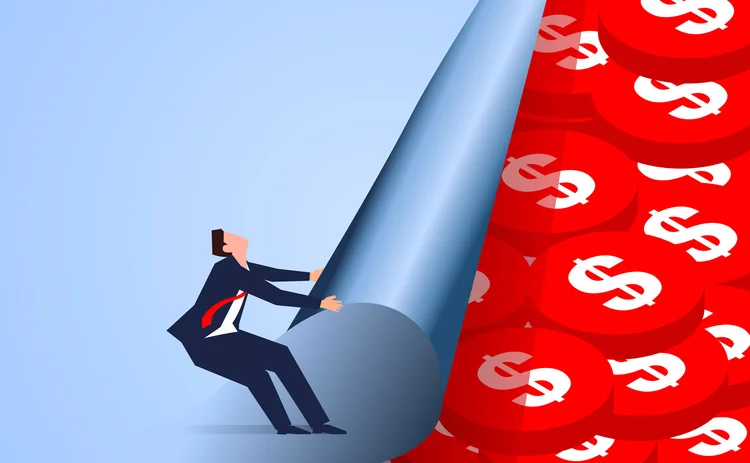
Low FX vol regime fuels exotics expansion
Interest is growing in the products as a way to squeeze juice out of a flat market

How do you make money in foreign exchange volatility markets when there is no volatility? You get creative.
It’s an understatement to say FX options desks have had a rough year, despite the macro conditions seemingly suggesting otherwise. The Deutsche Bank Currency Volatility Index traded as low as 5.97 on July 7 – the worst level since the beginning of 2022. Although levels have risen since the yen carry unwind in August, and the US election is on the horizon, options traders are still gasping for some volatility action.
When implied and realised volatility are supressed, premiums for vanilla structures often get eaten up and appetite from hedge funds diminishes. Where banks can entice some interest, however, is in the more complex exotic space.
These products differ from vanilla structures in their trigger points, payment calculations, expiries and strike prices. They often allow funds to be more specific with what view they want to put on at a cheaper price. And the addition of knockouts enables them to trade with more leverage due to the exotic payout structure.
The growth of relative value and large multi-strategy funds has fuelled the continued demand for products such as barrier options and dual/triple digitals, so that they can make bets on the yen and Chinese renminbi.
However, there is an argument to be made about how exotic these products are. Some dealers describe these products as “first-generation exotics” or “light-exotics”, compared with more complex strikeless products like volatility swaps or forward volatility agreements.
Not all banks are as advanced as others in their capabilities to price these trades quickly and accurately, and therefore tend to stick to the vanilla end of the exotic spectrum. It is also a lot more complex for banks to internalise the risk from these trades with other clients.
But 2024 has had its fair share of event risk, which has made exotic options attractive for fund managers. Dealers note that even firms like asset managers and pension funds, who usually shy away from options all together, have made use of exotics to put on a specific view around a specific event risk at a cheaper price.
Also, as buy-side trading desks become more cross-asset, there is growing demand for more complex structures that enable them to bet on correlation trends between FX volatility and other markets like gold, oil and the S&P500.
As more buy-side firms become comfortable with exotic FX options, some banks see an opportunity to leverage expertise from their equities derivatives businesses to build this out. Others could also devote resources from their hedge fund coverage to real money.
With the US election fast approaching, pundits are still unsure about which way it will go. Talks of the return of strict tariffs on China and Mexico from a potential Trump victory has caused vol levels to rise. As uncertainty continues, FX volatility and global options markets may become exciting again.
Editing by Lukas Becker
Only users who have a paid subscription or are part of a corporate subscription are able to print or copy content.
To access these options, along with all other subscription benefits, please contact info@risk.net or view our subscription options here: http://subscriptions.risk.net/subscribe
You are currently unable to print this content. Please contact info@risk.net to find out more.
You are currently unable to copy this content. Please contact info@risk.net to find out more.
Copyright Infopro Digital Limited. All rights reserved.
As outlined in our terms and conditions, https://www.infopro-digital.com/terms-and-conditions/subscriptions/ (point 2.4), printing is limited to a single copy.
If you would like to purchase additional rights please email info@risk.net
Copyright Infopro Digital Limited. All rights reserved.
You may share this content using our article tools. As outlined in our terms and conditions, https://www.infopro-digital.com/terms-and-conditions/subscriptions/ (clause 2.4), an Authorised User may only make one copy of the materials for their own personal use. You must also comply with the restrictions in clause 2.5.
If you would like to purchase additional rights please email info@risk.net
More on Our take
Why a Trumpian world could be good for trend
Trump’s U-turns have hit returns, but the forces that put him in office could revive the investment strategy
Roll over, SRTs: Regulators fret over capital relief trades
Banks will have to balance the appeal of capital relief against the risk of a market shutdown
Thrown under the Omnibus: will GAR survive EU’s green rollback?
Green finance metric in limbo after suspension sees 90% of top EU banks forgo reporting
Has the Collins Amendment reached its endgame?
Scott Bessent wants to end the dual capital stack. How that would work in practice remains unclear
Talking Heads 2025: Who will buy Trump’s big, beautiful bonds?
Treasury issuance and hedge fund risks vex macro heavyweights
The AI explainability barrier is lowering
Improved and accessible tools can quickly make sense of complex models
Do BIS volumes soar past the trend?
FX market ADV has surged to $9.6 trillion in the latest triennial survey, but are these figures representative?
DFAST monoculture is its own test
Drop in frequency and scope of stress test disclosures makes it hard to monitor bank mimicry of Fed models








